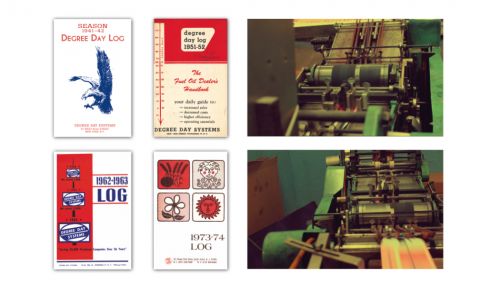All
Inside the Electronic Logging Device Mandate
by Richard Pummell, Foley Carrier Services

The transportation industry has been buzzing about the Electronic Logging Device (ELD) mandate for months now. Many carriers and drivers have expressed opposition to the mandate, concerned about how the devices would affect their operations. So let’s take a look at the issues and answer some of the most common questions.
How does the mandate affect the current Hours-Of-Service (HOS) rules?
It is important to separate the new mandate from the current HOS rules, which are not changing. The method in which a driver records his/her duty status is what is changing. Instead of logging time on a paper log, it will now be recorded electronically, but the same information is required to be logged, i.e. on-duty time, driving time, etc.
When does the mandate go into effect?
The Federal Motor Carrier Safety Administration (FMCSA) is giving truck operators two years to ensure an ELD is in use, with an effective date of December 16, 2017. Carriers who are currently utilizing Automatic On-Board Recording Devices (AOBRDs) or Electronic On-Board Recorders (EOBRs) will have two additional years to comply with the ELD mandate by December 16, 2019.
Who is exempt from the mandate?
- Drivers who are currently not required to maintain a log because they fall into the 100/150 air-mile radius log exemption.
- Drivers who keep logs for no more than eight days during a 30-day period. However, it is important that the eight-day time frame is adhered to because as soon as a driver goes even one day over, ELDs are required.
- Drive-away/tow-away operators transporting empty vehicles.
- Drivers of vehicles with a model date prior to the year 2000. (These vehicles are exempt from ELD requirements, but drivers need to continue using paper logs.)
Just as carriers who lease equipment are not exempt from maintaining paper logs, they will not be exempt from the ELD mandate.
How will ELDs affect carriers who are both short-haul and long-haul?
In order to alleviate errors, the best bet will be for the carrier to predetermine which drivers will be utilizing the 100/150 air-mile exemption (short-haul) and which will be long-haul; and then adhere to those designations.
How will ELDs record yard moves and other “stop & go” situations?
- As soon as a vehicle hits 5 MPH, the ELD will go into “driving” mode. However, it will not calculate distance or driving time. It will simply record that the vehicle is in drive.
- If the vehicle does not move for five consecutive minutes, the ELD will ask the driver to confirm his status.
Currently a “yard move” is defined by the FMCSA as a manual event and not a duty status. It’s expected that the FMCSA will provide a more detailed definition and further guidance regarding yard moves and traffic situations before the mandate goes into effect.
What is the difference between an ELD and other on-board logging devices?
The primary difference between the ELD and the AOBRD and EOBR is that the ELD syncs with a truck’s engine in order to capture the following data:
- Date
- Time
- Location
- Engine hours
- Vehicle Miles
- Driver, vehicle and motor carrier identification data
What if I use my vehicle for personal use?
When a vehicle is being used for purposes other than Interstate commerce and is solely being used for personal use, this should be noted on the ELD as off-duty time, and the line should be illustrated as a dotted or different colored line. There has been talk of the FMCSA introducing a new duty status known as “Off-Duty, Driving” in order to be able to more clearly identify personal use, but there is little information on this as of yet.
The Pros
While acknowledging that change is difficult and that federal regulations can sometimes feel unfair and onerous, let’s look at some positive aspects of the ELD mandate that may be overlooked.
- Drivers will have more control over their off-duty time. Currently, many employers are able to interrupt a driver’s off-duty or sleeper berth time without any record or documentation of the interruption. ELDs will contain a Muting option that the driver can enable while he or she is off-duty or in the sleeper-berth. Drivers will be able to relax and rest without the possibility of being interrupted by their employer.
- No more messy, disorganized logs. This is one of the best parts about ELDs. Regulations require logs and supporting documents (i.e. fuel receipts) to be maintained for a period of six months. Now all logs are easily stored and accessed on one device, freeing up space and cutting down the possibility of logs being misplaced. Organization of logs (and all paperwork) is key, especially in the case of DOT Audits. And on that note….
- DOT Audits. DOT auditors will be able to easily access the logs and get the information they need quickly, thereby greatly reducing the time they spend in your office.
It is likely that the FMCSA will release more guidance, as well as fine-tune some murky areas, prior to the mandate taking effect. In the meantime, if you have any questions about ELDs or other DOT Compliance programs, feel free to call Foley at 1 (800) 253-5506, and check out our website at www.foleyservices.com.
Related Posts
 100 Years of Helping Fuel Retailers Deliver!
100 Years of Helping Fuel Retailers Deliver!
Posted on August 18, 2025
 U.S. Competing to Secure Critical Minerals
U.S. Competing to Secure Critical Minerals
Posted on June 16, 2025
 The Clean Air Act, the EPA, and State Regulations
The Clean Air Act, the EPA, and State Regulations
Posted on May 14, 2025
 Day Tanks Support Back-up Generators in Extreme Conditions
Day Tanks Support Back-up Generators in Extreme Conditions
Posted on March 10, 2025
Enter your email to receive important news and article updates.
